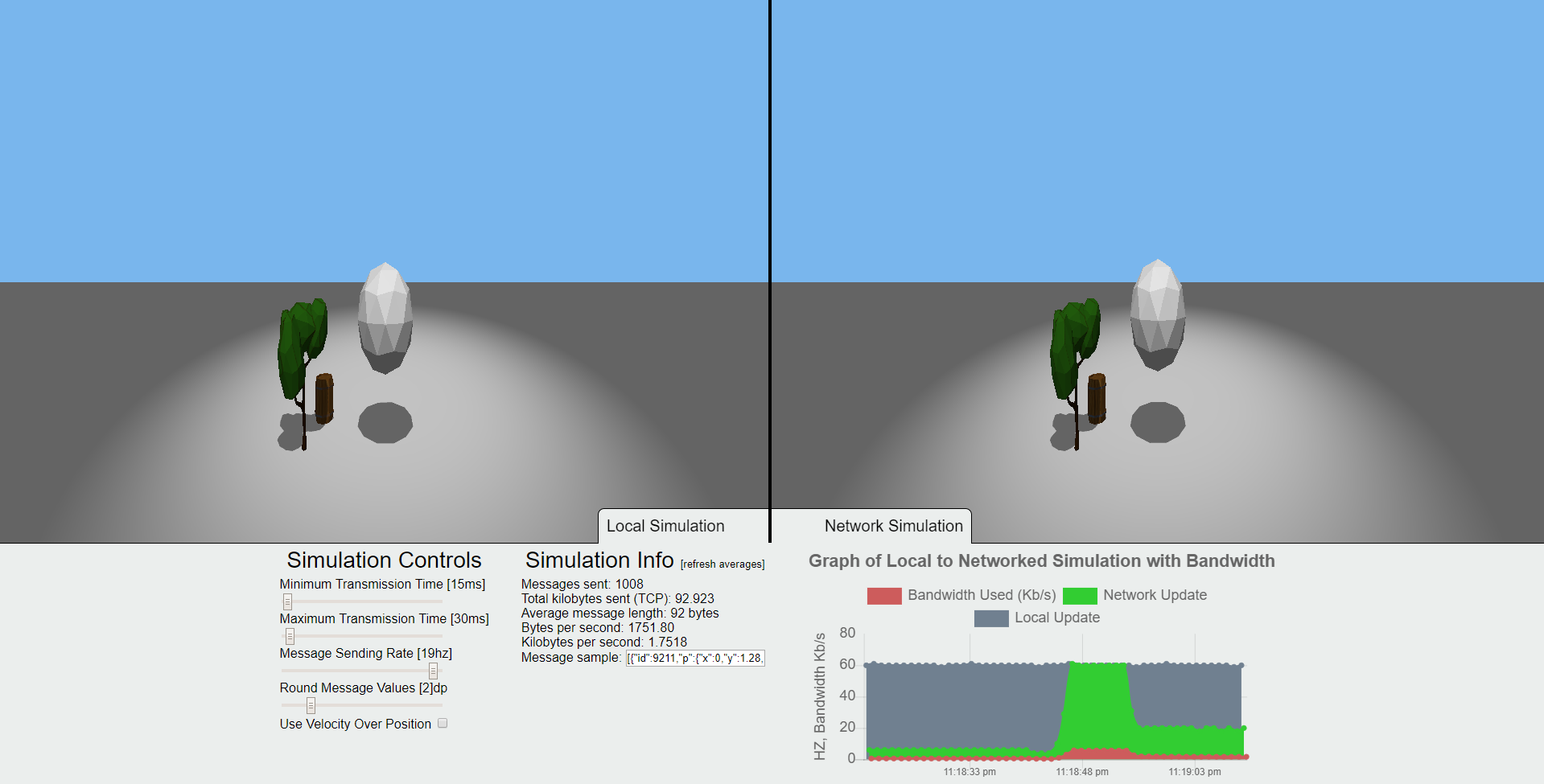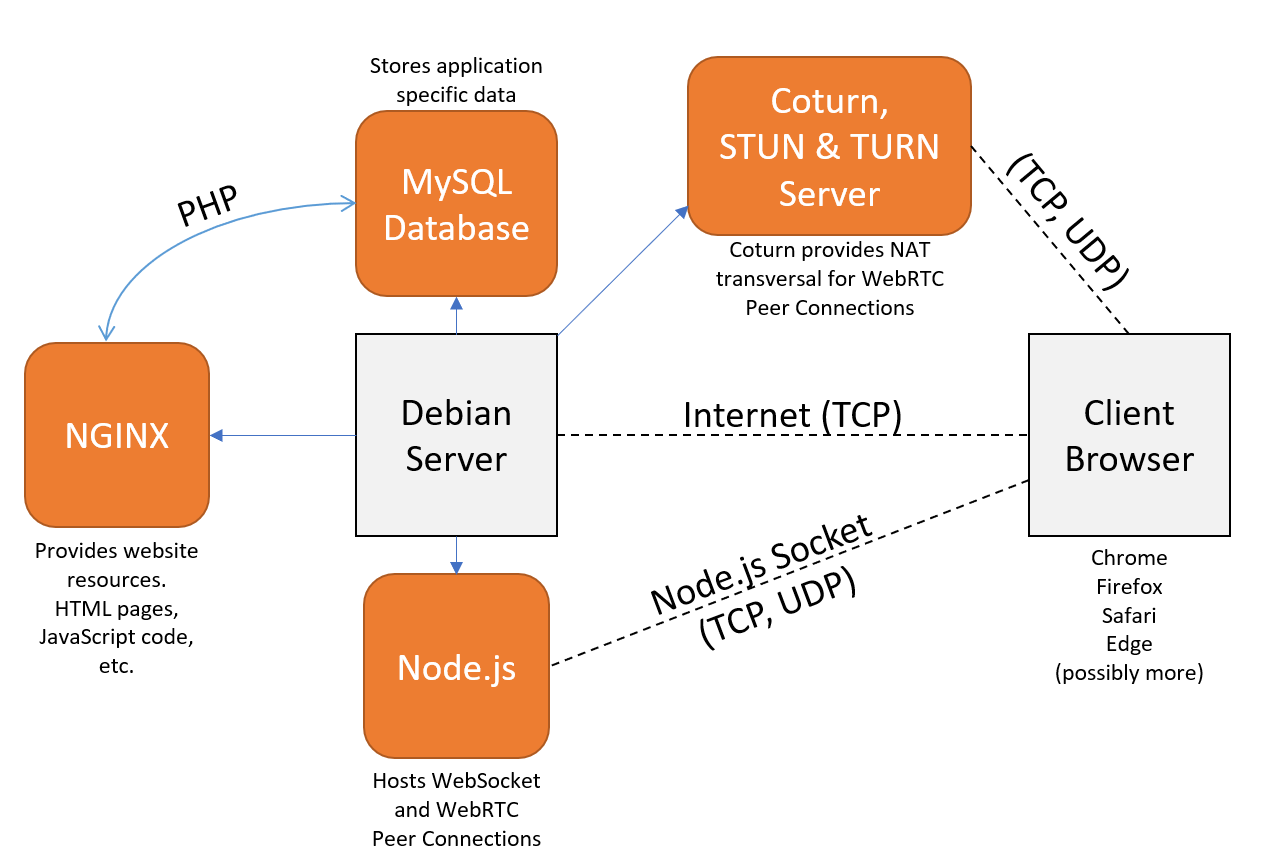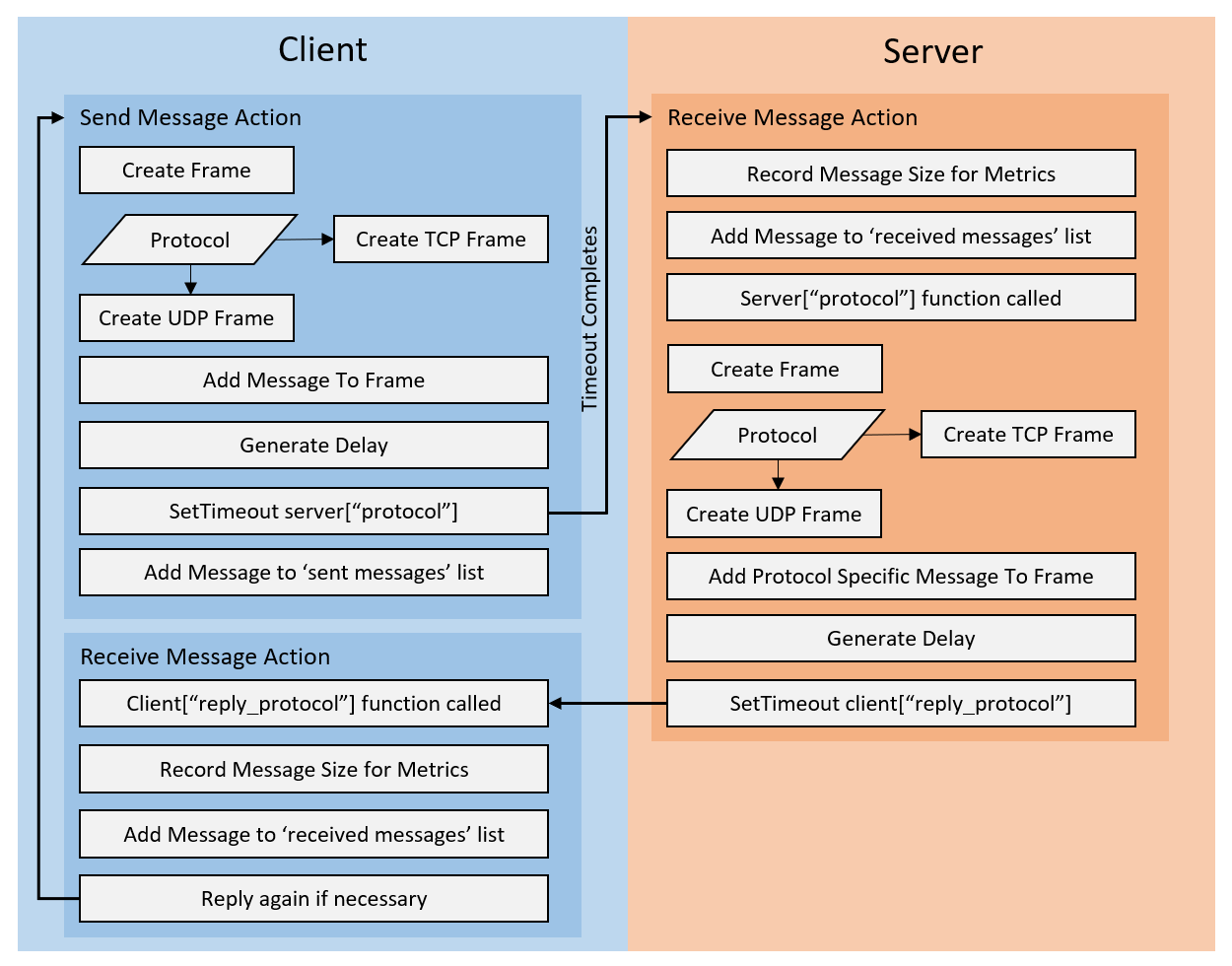An implementation of real-time browser communication protocols with accompanying teaching tools
Abstract
Networking theory is taught throughout education with varying specificity, this dissertation focuses on the types of networks achievable in the modern web browser. There are many parameters that contribute to the performance of a network, whether it be available bandwidth, protocol used, transmission latency, etc. It is up to the developer to be aware of these parameters and to leverage them for the best performance possible. An application is made to show, side by side, the effects of aforementioned network parameters in a system. A prototype implementation of the WebRTC protocol is made and compared to an equivalent WebSocket architecture. A second network configuration and simulation web-app is made to allow simulation of more complex network behaviour, and assist in teaching a range of web protocols.
The results of this project show that whilst WebRTC enables UDP communications for the web, at minimum, it uses more bandwidth than a TCP WebSocket. The project also establishes the rather complicated steps necessary to use WebRTC, within the browser, or in a Node.js server environment. The developed simulations are tested and had a range from 5 - 25% margin of error, and their application for demonstrating effects of environment variables on a network and teaching protocols via simulation is evaluated. The simulations can be used to demonstrate whether a network configuration will ‘fail’ by running out of bandwidth, and subsequently estimate the bandwidth necessary
Products of the Dissertation
- Asset 1, TCP network simulation
- Asset 2, WebRTC client / server chat
- Asset 3, Netsim: User-Specified Network Simulator
- Dissertation PDF
Supplementary Material
The zip of all code produced that is related to this dissertation
Images
If these are of interest, there are more inside the Dissertation PDF
Asset 1, TCP Network Environment Simulation

Asset 2, WebRTC Implementation - Client / Server Chat

Asset 3, Netsim: User-Specified Network Simulator




Technical




